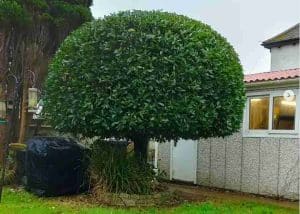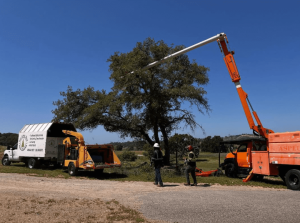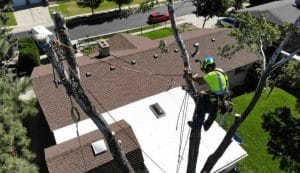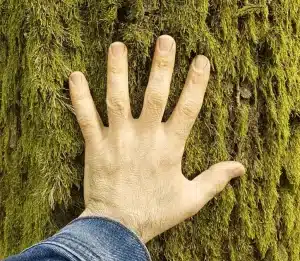After tree removal, the best plants to grow include colorful flower beds, hardy shrubs, ground covers, or even a smaller tree that better fits your yard. Once a tree is gone, you’re left with a fresh canvas that may look empty at first but holds plenty of potential. With the right soil preparation and plant choices, you can transform that bare space into something vibrant, functional, and easy to maintain. This guide explains how to prepare the ground, choose the right plants, and design a lasting landscape that benefits both your home and the environment.
Table of Contents
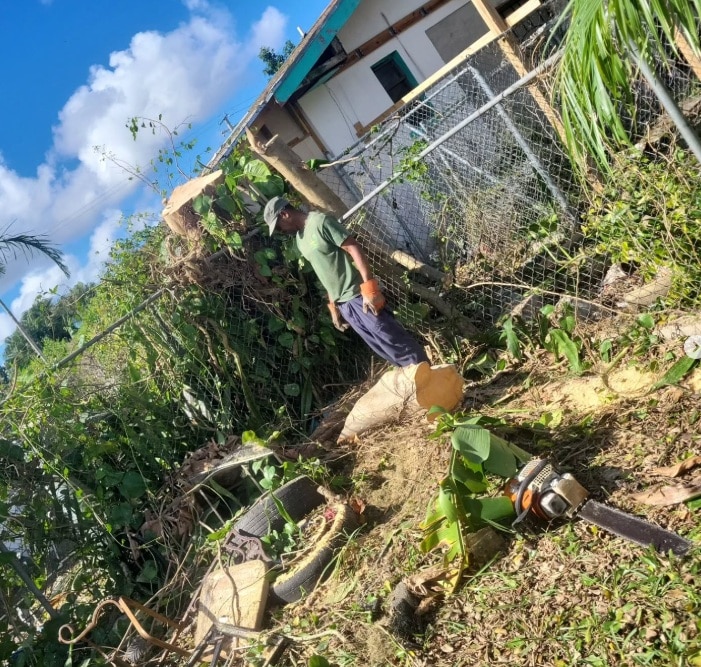
Step One: Preparing the Soil After Tree Removal
Before you plant anything, the soil needs attention. Tree removal often leaves behind compacted dirt, leftover roots, and even wood chips if the stump was ground down. These issues can affect how new plants grow.
- Remove leftover roots and debris – Use a rake or shovel to clear out small roots and chips.
- Test the soil – Many trees, especially pines, can change soil pH. A simple soil test will show if your soil is too acidic or lacking nutrients.
- Add compost and topsoil – Mixing in organic matter loosens the ground and improves drainage.
- Level the area – Smooth the surface so water doesn’t pool and new plants grow evenly.
Healthy soil gives your new garden the best chance to thrive.
Best Plants for Areas Where a Tree Was Removed
When planning what to plant after tree removal, think about sunlight, soil, and the size of the space. The area may now receive full sun instead of shade, so plants that love bright conditions will do well. Here are some options:
1. Flower Beds
Perennials like coneflowers, black-eyed Susans, and daylilies add color year after year. Annuals such as marigolds or petunias can fill gaps and provide instant brightness.
2. Shrubs for Structure
Shrubs like hydrangeas, boxwoods, or azaleas give the area shape and height, making the space feel balanced again.
3. Ground Covers
If you want something low-maintenance, consider creeping thyme, clover, or vinca. These cover bare soil quickly, reduce erosion, and keep weeds away.
4. New Trees
If you miss having a tree, choose a species that fits your yard better. For example, ornamental trees like dogwood or Japanese maple provide beauty without growing too large.
Consider Sunlight and Drainage Changes
The biggest change after tree removal is sunlight. Areas that were once shaded may now have harsh sun most of the day. Plants that struggled in the shade might finally flourish. On the other hand, the removal may also alter drainage. Without a tree absorbing water, the soil might stay wetter after rain.
- Full sun plants: Lavender, roses, sunflowers
- Moist soil plants: Hostas, ferns, astilbes
- Dry soil plants: Sedum, yarrow, ornamental grasses
Matching your new plantings to the conditions ensures long-lasting success.
How to Prevent Stump and Root Regrowth
You can prevent stump and root regrowth by treating the area with herbicide or natural solutions, covering it with mulch, and removing any large roots that remain. Even after a tree is removed, stumps and underground roots may try to sprout new shoots, which can interfere with fresh plantings. Using a targeted treatment stops the old tree from coming back. A thick layer of mulch blocks sunlight while also enriching the soil, and digging out bigger roots ensures they won’t compete with new plants. Taking these steps leaves you with a clean, healthy space that’s ready for your next landscaping project.
Creating a Garden Design That Lasts
The best way to create a lasting garden design after tree removal is to plan for balance, long-term growth, and how you want to use the space. Instead of filling the area randomly with plants, think about your goals first. Some homeowners prefer a low-maintenance design that requires little watering or upkeep, while others enjoy building a showcase garden filled with seasonal flowers. If year-round appeal is important, evergreens and hardy shrubs can keep the space looking full even in the winter. Families may also want to leave part of the area open for kids or pets to enjoy.
A thoughtful mix of perennials, shrubs, and ground covers gives structure and color through every season. By designing with both function and appearance in mind, you’ll create a garden that not only looks beautiful today but also grows gracefully for years to come.
Mistakes to Avoid When Replanting
To make sure your new plants succeed, avoid these common mistakes:
- Planting too soon without preparing the soil.
- Choosing plants that need shade when the area is now full sun.
- Ignoring leftover roots and wood chips that block growth.
- Overwatering, especially in spots where drainage changed.
Taking time to plan prevents wasted effort and keeps your garden thriving.
Conclusion: A Chance to Transform Your Yard
Tree removal can leave your yard feeling empty, but it also opens the door to new possibilities. By preparing the soil, preventing regrowth, and carefully choosing what to plant after tree removal, you can turn a bare patch into a healthy, attractive, and functional part of your landscape. Whether you create a colorful flower bed, plant shrubs for privacy, or start fresh with a new tree, the results will bring beauty and value for years to come.
FAQs
What can I plant in the spot where a tree was removed?
You can plant flowers, shrubs, ground covers, or even a new tree. The best choice depends on soil quality, sunlight, and how you want to use the space.
How do I prepare the soil after tree removal?
Clear roots and wood chips, test the soil, and mix in compost or topsoil. Healthy soil improves drainage and ensures strong growth for new plants.
What flowers grow best after a tree is removed?
Sun-loving flowers like coneflowers, marigolds, and black-eyed Susans thrive in open areas where shade is no longer blocking sunlight.
How can I stop old tree roots from sprouting again?
Apply herbicide or natural solutions like vinegar, cover the stump with mulch, and remove larger roots to prevent unwanted regrowth.
What can I plant around an old tree stump?
Shade-tolerant flowers, ground covers, or ornamental grasses grow well. You can also decorate with mulch and potted plants for a neat look.
How to fill a hole after removing a tree?
Remove roots and wood chips, then fill with compost-enriched topsoil. Compact lightly and level the ground before planting grass or flowers.
What to do after cutting down a tree?
Clean up debris, grind or remove the stump, and enrich the soil with compost. Then, replant with shrubs, flowers, or a smaller, more suitable tree.
How long do roots last after tree removal?
Tree roots stop growing once the tree is gone but can remain for years. Smaller roots break down in a few years, while larger roots may take decades.
Should I plant shrubs after tree removal?
Yes, shrubs like hydrangeas or boxwoods add structure, greenery, and year-round appeal, making the area look balanced and full again.
What are the best low-maintenance options to plant?
Ground covers such as creeping thyme, clover, or vinca spread quickly, prevent erosion, and reduce weeds while requiring minimal care.
